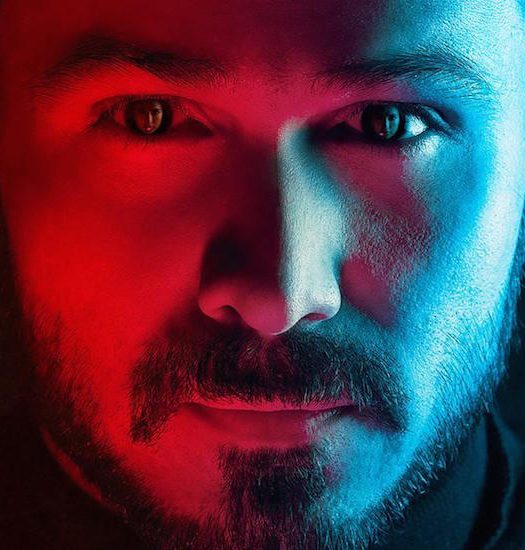Exploring cinematic realism in Raees with Cinematographer K U Mohanan
K U Mohanan is known for creating immersive and organic images onscreen that draw viewers into the film, often implementing different innovative ways to achieve this effect. His work in feature films like Don, Miss Lovely, Talaash, Aaja Nachle, documentary like The Celluloid Man, and many more, has led audiences through different experiences that have evoked strong emotions.
We caught up with the ace cinematographer to know more about his latest film Raees.He talks about bringing alive the gangster drama through his visuals, why they chose to create a humongous set and how he keeps away from researching for references while shooting a film.

Cinematographer K U Mohanan with Director Rahul Dholakia
How would you describe Raees from a visual point of view?
It’s difficult to explain because it is too vast. It is based on cinematic realism. I can say that it is different from so called ‘commercial film cinematography’.
How do you shape the theme of the film?
The whole idea comes from the script. As soon as you start reading it, you start visualizing and then discuss it with the director. Then you do a recce. Usually I don’t pull out references from anywhere because I don’t want to be influenced by anything or anybody before the shoot. I don’t want my work to look like a copy. All my films have to stand out as my original work. My ideas come from discussions with the director, production designer and so on.
And locations! You see the locations – the lights, colours, you take pictures, discuss it and give your point of view. That is how it works with me. We did extensive pre-production before we started shooting. Basically the time you spend before shooting decides the look and everything else about a film.

With Shah Rukh Khan during the making of Raees
What kind light design did the story demand? Also, what color palette have you worked with?
The colour palette is derived from what we saw in real locations in Gujarat, especially the old city of Ahmedabad and an old town near it called Satpol. After seeing the locations and architecture, we decided to work around the same colours that the city is giving us. We kept it real with green, blue, pastels, the palette was on the colder side.
The film was shot in schedules spread across two years and many locations but the main location was a studio. After scouting many real locations we decided to create the location in a studio. We had a huge, real looking, open air set in Film City. We did this so that technically we could use the exact colours and light that we wanted. We created a clear colour palette for the film before we started making the set. In fact, the production department copy pasted exact replicas of buildings that existed in real locations. Then we painted them according to our requirements.
Thus for me it was easy. For example, if I wanted to create shadows, I could do that easily by spreading huge cloths all over the set. So I would get proper shadows and create soft lights around the set. Sometimes when we had to shoot in the night, I could light it up and make it look like day. It was a complete studio set up but when you watch the film it will look very real. My approach to the film is cinematic realism. Anything dark is dark, shadow is shadow etc. I never tried to make it glamorous or commercial.
Also it has always been wonderful working with Prime Focus. Ashirwad Hadkar is one of the best colorists we have in our country right now. My association with Ashirwad has been for last 17 years, ever since he was working with Adlabs as a film colorist. He is very experienced and extremely talented. We have used cooler colours for the film and few warm colours for the songs in the movie. I’m very happy with the way Ashirwad has given that final touch in DI and grading to this film.
How would you describe the treatment chosen for the songs?
While shooting the songs, I took some liberty and made them a little glossier. The song ‘Udi Udi Jaaye’ is about kite flying and garba, so we tried to shoot within the parameters of reality. The cabaret song ‘Laila’ is picturized in a bar in old Gujarat and it looks grand as we used kitschy colours and light. I didn’t want to make it look like a typical item song in the current commercial films, so I stuck to the period but tried making it glossy. All the songs have been treated like that.

Behind the scenes of Raees
What has been your favourite camera to shoot? Was Raees shot on the same?
I have always liked the look of ARRI Alexa and used the same to shoot this film. We had two Alexas on set. I used the Cooke lenses with it.
Which was the most difficult shot to achieve? How much planning went it to it?
The film has three major action sequences that were shot very differently, that I think was the most exciting thing to work on. There is one action scene which happens in a meat market, which is my favourite scene. The meat market was so convincingly and beautifully created. The entire sequence was shot with the camera suspended from the top using elastic. It creates a feeling of the camera being part of the action. All corners and other things that were not possible to shoot handheld were shot this way. I could go really low and come up and try various other things, which become difficult when the camera is handheld.



